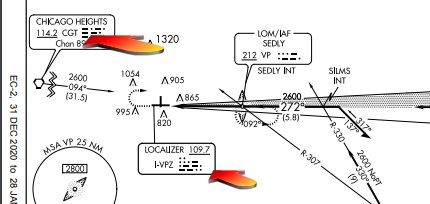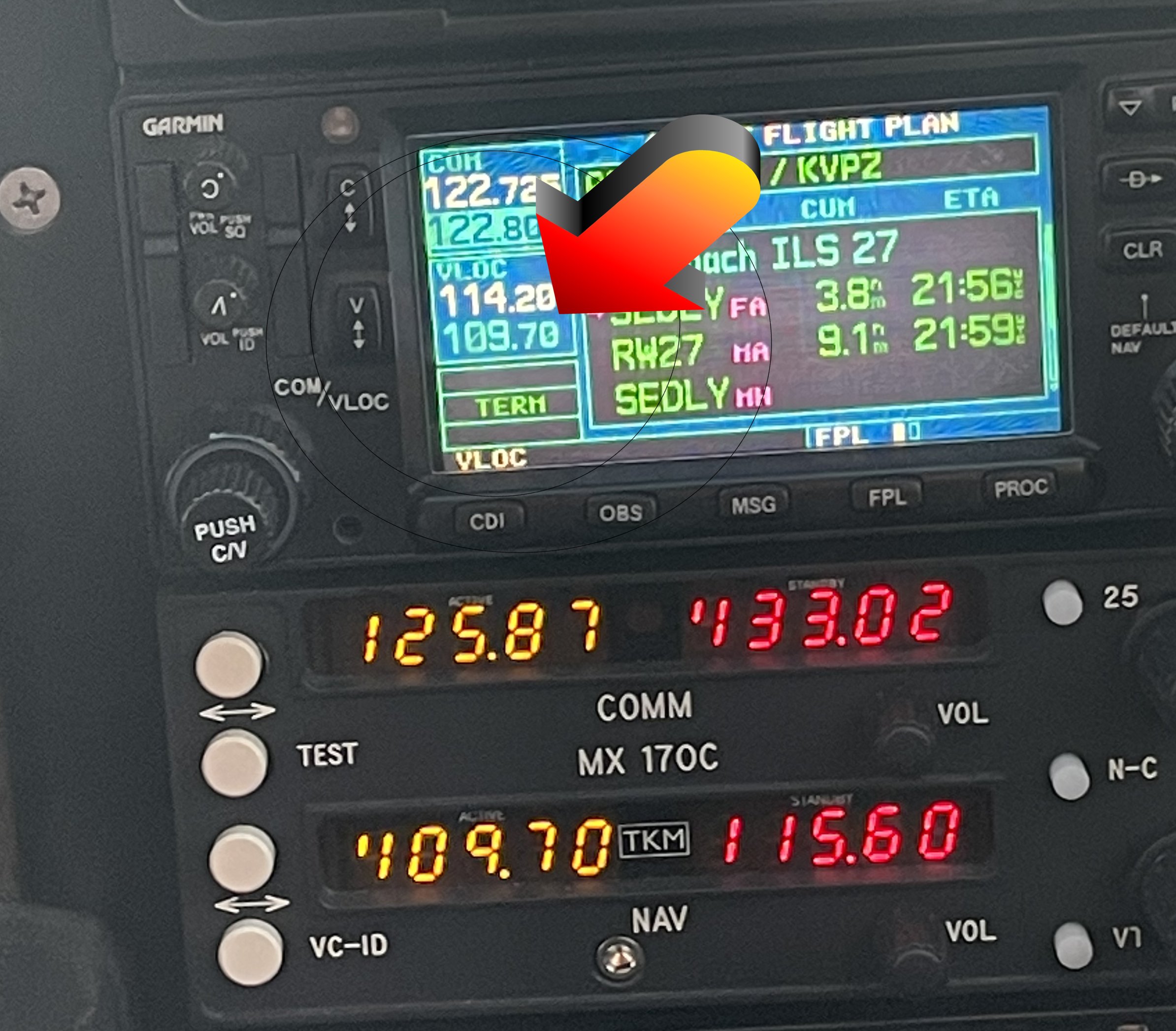Flying an approach will typically take a pilot along a specific path that keeps them clear of obstacles and aligns them with an intended landing point. When things work correctly or are properly conducted. When that isn’t the case, a pilot may find themselves flying somewhere aht isn’t exactly “on the approach”.
On a recent practical test I conducted, the tracking my charting software shows a fairly straight track of a path along an approach, but it is obviously not along the approach path of the ILS we were intending to conduct. Hmm. What might cause that you might ask?

Well, the second picture below this will highlight quickly what might be the culprit.

If we look more closely at the approach data, we can see that the ILS frequency is 109.7, and that there is another frequency listed on the approach plate of 114.2 for the Chicago Heights VOR. It’s a small thing, but making sure when you are flying an approach that the correct navigation frequency is tuned and ACTIVE can be a critical part to successfully, and safely, flying an approach.
In this particular scenario, the approach had been loaded into the Garmin 430, but the appropriate frequency for the ILS had not been “made active”. The alternate frequency that was actually active happened to be for the CGT VOR that had been in the system from a previous flight. This is a VERY common oversight for IFR pilots that results in an unsuccessful approach.

In this case, it lead the applicant on the practical test I was conducting to fly a tuned radial that closely paralleled the approach path of the ILS, a few miles north in fact, but not a path that actually was the proper approach path to be flown. In a real-world scenario, this might have lead a pilot to fly in an unprotected area that in different areas of terrain could have obstructions.
The simple act of not making the correct approach frequency active is critical to the success of an approach, and in this case, a practical test that wasn’t successful as a result.
This isn’t the first time a practical test has been unsuccessful due to improperly tuned navigation frequencies, and it won’t be the last. But it is certainly illustrative of how important it is for us no only on practical test efforts, but also for the diligence needed when flying an instrument procedure in real life. On a practical test, your passing may depend on it, but outside of a testing environment, it may be your life that depends on it.

Great example Jason. Something an F-Wire check should catch.